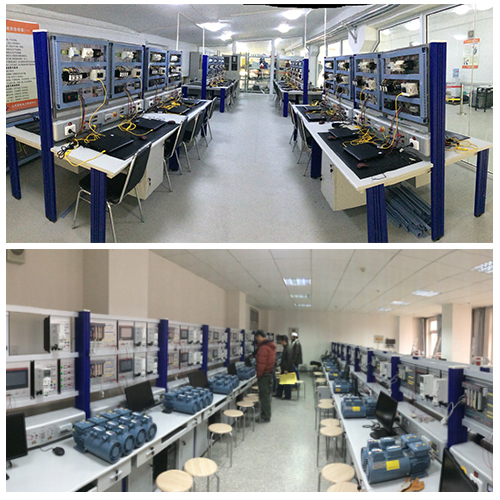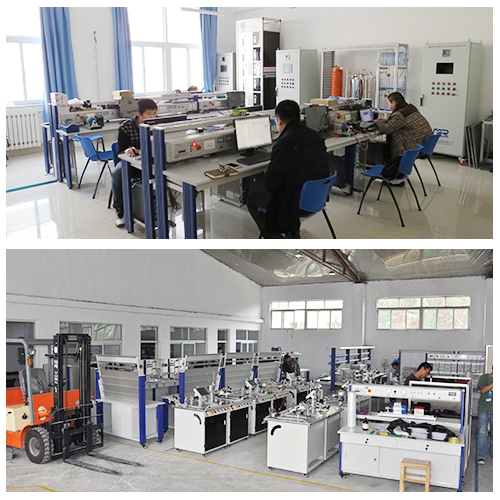MR1049 Aerodynamics Main Unit Civil engineering lab equipment School Teaching Equipment
1. Equipment introduction
1.1 Overview
Aerodynamics is a branch of fluid mechanics that studies the force characteristics of aircraft or other objects in relative motion with air or other gases, the flow patterns of gases, and the accompanying physical and chemical changes.
There are two main classification methods for aerodynamics. One is based on the speed range of fluid movement or the flight speed of the aircraft. Aerodynamics can be divided into low-speed aerodynamics and high-speed aerodynamics. Usually, the speed of 400 kilometers per hour (this value is close to the value of 1Atm on the ground and 0.3Ma at 288.15K) is used as the dividing line. In low-speed aerodynamics, the gas medium can be regarded as incompressible, and the corresponding flow is called incompressible flow. The other is based on whether the viscosity of the gas medium must be considered in the flow. Aerodynamics can be divided into ideal aerodynamics (or ideal gas dynamics) and viscous aerodynamics.
The aerodynamic master device is a device that can demonstrate the main theories and phenomena in aerodynamics, and can help students or other professionals understand some experimental theories in aerodynamics more clearly. The device mainly consists of a main body and multiple experimental modules, which provide rich experimental demonstrations.
1.2 Features

(1) Adopting a safer electrical design, the device has excellent and reliable grounding performance.
(2) An integrated electrical design scheme is adopted. The electrical control and experimental equipment are installed together, which greatly reduces the size and safety of the experimental equipment. This design scheme allows the experimental equipment to get rid of the constraints of the environmental site.
(3) The device provides many various experimental modules, and the experiments that can be performed are becoming more and more abundant.
(4) Using corrosion-resistant and stronger materials, the equipment has higher safety and longer service life.
2. Technical parameters
Input power supply: single-phase AC220V, 50Hz
Size: 1960*870*2120
Weight: 272kg
Working conditions: ambient temperature -10℃~+40℃; relative humidity <85% (25℃)
3. Components list and detailed introduction
3.1 Main part
No. Name
1 fan
2 electrical box
3 thermometer
4 Measuring hole
5 air flow valve
6 Overflow protection valve
7 buckle
8 Fluid start end of experimental module
9 air return end
3.2 Power box part
No Name
1 Fan speed knob
2 fan start switch
3 Emergency stop switch
4 expansion jack
5 breaker
6 smoke generator socket
3.3 Equipment configuration list
No. Name Qty

Component 1 fan 1
Component 2 Fluid visualization experiment module 1
Component 3 Bernoulli's Principle Experiment Module 1
Component 4 Coanda Effect Experiment Module 1
Component 5 Experimental module for measuring velocity boundary layer thickness 1
Component 6 Flow resistance loss (with airfoil) experimental module 1
Component 7 Local pressure loss experiment module 1
Component 8 Multi-tube hydraulic column differential pressure gauge 1
Component 9 Cylindrical experiment kit 1
Component 10 Narrow experimental kit 1
Component 11 thermometer 1
Component 12 breaker 1
Component 13 Emergency stop switch 1
3.4 Accessories
No Name Qty
1 Smoke oil 2
2 Oil injector 1
3 smoke generator 1
4 blue ink 1
5 Hexagon socket kit 1
6 Industrial plug 1
7 trachea 100
4. Experiment list
Experiment 1 Understand the electrical control principle of the aerodynamic main device
Experiment 2 Flow visualization experiment demonstrating aerodynamic main device
Experiment 3 Demonstration of the main aerodynamic device to measure velocity boundary layer thickness experiment
Experiment 4 Demonstration of flow resistance loss experiment of aerodynamic main device
Experiment 5 Experiment demonstrating local pressure loss of aerodynamic main device
Experiment 6 Free jet experiment demonstrating aerodynamic main device
Experiment 7 Demonstration of the Coanda effect experiment of the aerodynamic main device
Experiment 8 Demonstration of Bernoulli’s principle experiment of aerodynamic main device

